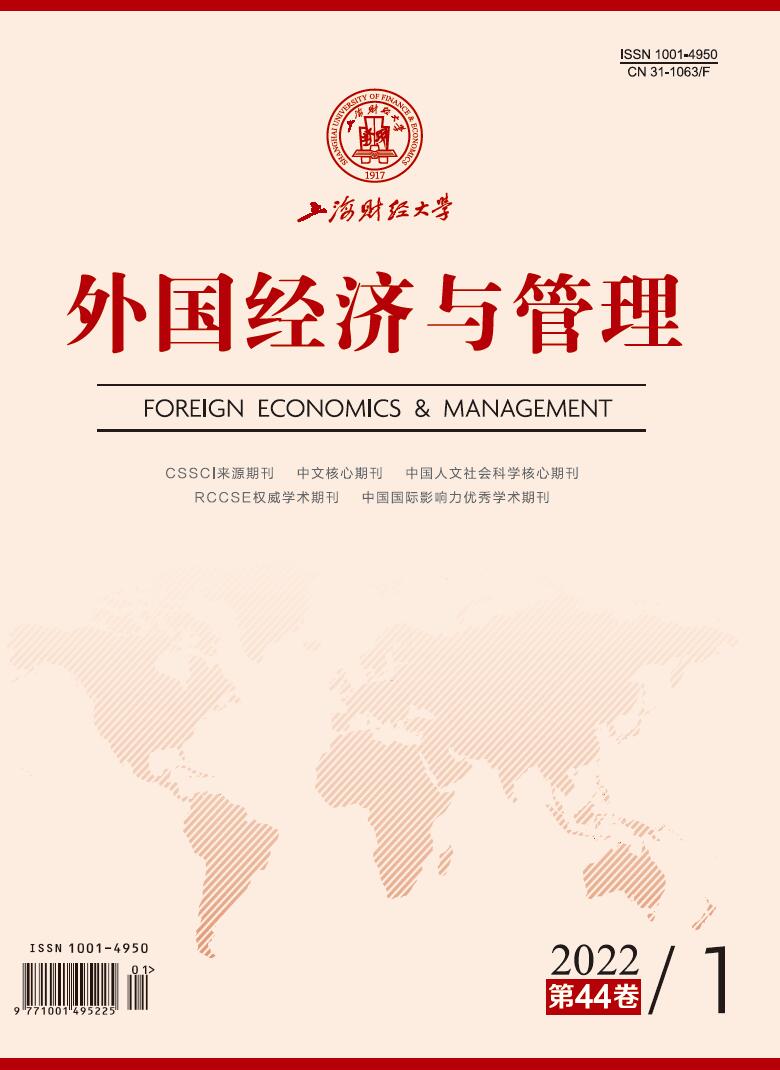连锁经营可以打破资源限制瓶颈,实现不同区域的快速扩张,是知识转移的有效方式,有着极强的竞争能力。但在其拓展过程中,不可避免地会与其竞争对手在多个市场遭遇,在这一过程中连锁企业依靠的是全方位的复制还是持续创新,仍然是理论上研究的空白。本文基于知识管理理论,根据39个一线、新一线及二线城市中共312家经济型连锁酒店数据,着重探讨连锁企业在多市场接触问题背景下的不同拓展时期惯例复制与企业创新的作用机理,实证分析后发现连锁企业的拓展模式是一个相对动态的过程:惯例复制和企业创新均能提高企业绩效,在拓展初期惯例复制的影响更强,而在拓展稳定期企业创新的影响更强;考虑多市场接触后,在拓展初期惯例复制对企业绩效的积极影响受到抑制,而在拓展稳定期这种积极影响会被增强;进一步分析后发现在多市场接触的影响下,不同时期的企业创新对企业绩效的积极影响都会被强化。文章深化了知识管理对企业发展的影响研究,为连锁企业的战略发展提供了理论参考。
从惯例复制到企业创新:连锁企业的拓展模式研究
摘要
参考文献
1 Afraz M F, Bhatti S H, Ferraris A, et al. The impact of supply chain innovation on competitive advantage in the construction industry: Evidence from a moderated multi-mediation model[J]. Technological Forecasting and Social Change,2021, 162: 120370. DOI:10.1016/j.techfore.2020.120370
2 Alon I, Ni L Q, Wang Y C. Examining the determinants of hotel chain expansion through international franchising[J]. International Journal of Hospitality Management,2012, 31(2): 379-386. DOI:10.1016/j.ijhm.2011.06.009
3 Anand J, Mesquita L F, Vassolo R S. The dynamics of multimarket competition in exploration and exploitation activities[J]. Academy of Management Journal,2009, 52(4): 802-821. DOI:10.5465/amj.2009.43670897
4 Bengtsson M, Kock S. “Coopetition” in business Networks—To cooperate and compete simultaneously[J]. Industrial Marketing Management,2000, 29(5): 411-426. DOI:10.1016/S0019-8501(99)00067-X
5 Chen C J. Technology commercialization, incubator and venture capital, and new venture performance[J]. Journal of Business Research,2009, 62(1): 93-103. DOI:10.1016/j.jbusres.2008.01.003
6 Chuang Y T, Dahlin K B, Thomson K, et al. Multimarket contact, strategic alliances, and firm performance[J]. Journal of Management,2018, 44(4): 1551-1572. DOI:10.1177/0149206315615399
7 Dickinson V. Cash flow patterns as a proxy for firm life cycle[J]. The Accounting Review,2011, 86(6): 1969-1994. DOI:10.2308/accr-10130
8 Domínguez B, Gómez J, Maícas J P. Multimarket pioneers: Does multimarket contact improve their performance?[J]. Long Range Planning,2021, 54(2): 101993. DOI:10.1016/j.lrp.2020.101993
9 Edwards C D. Conglomerate bigness as a source of power[A]. Stigler G J. Business concentration and price policy[M]. Princeton: Princeton University Press, 1955.
10 Faiguenbaum S, Berdegué J A, Reardon T. The rapid rise of supermarkets in Chile: Effects on dairy, vegetable, and beef chains[J]. Development Policy Review,2002, 20(4): 459-471. DOI:10.1111/1467-7679.00183
11 Fuentelsaz L, Gómez J. Multipoint competition, strategic similarity and entry into geographic markets[J]. Strategic Management Journal,2006, 27(5): 477-499. DOI:10.1002/smj.529
12 Furlan A, Galeazzo A, Paggiaro A. Organizational and perceived learning in the workplace: A multilevel perspective on employees’ problem solving[J]. Organization Science,2019, 30(2): 280-297. DOI:10.1287/orsc.2018.1274
14 Goh K T, Pentland B T. From actions to paths to patterning: Toward a dynamic theory of patterning in routines[J]. Academy of Management Journal,2019, 62(6): 1901-1929. DOI:10.5465/amj.2018.0042
15 Gupta A, Hoopes D G, Knott A M. Redesigning routines for replication[J]. Strategic Management Journal,2015, 36(6): 851-871. DOI:10.1002/smj.2254
16 Heimeriks K H, Schijven M, Gates S. Manifestations of higher-order routines: The underlying mechanisms of deliberate learning in the context of postacquisition integration[J]. Academy of Management Journal,2012, 55(3): 703-726. DOI:10.5465/amj.2009.0572
17 Kaufman-Scarborough C, Forsythe S. Current issues in retailing: Relationships and emerging opportunities: Introduction to the special issue from the American Collegiate Retailing Association 2005 and 2006 conferences[J]. Journal of Business Research,2009, 62(5): 517-520. DOI:10.1016/j.jbusres.2008.06.010
18 Kosová R, Lafontaine F. Survival and growth in retail and service industries: Evidence from franchised chains[J]. The Journal of Industrial Economics,2010, 58(3): 542-578. DOI:10.1111/j.1467-6451.2010.00431.x
19 Lee S, Song S J. Environmental awareness and practices among hotel chains[A]. Ivanova M, Ivanov S, Magnini V P. The routledge handbook of hotel chain management[M]. New York: Routledge, 2016.
20 Li S X, Huang Z M, Zhu J, et al. Cooperative advertising, game theory and manufacturer-retailer supply chains[J]. Omega,2002, 30(5): 347-357. DOI:10.1016/S0305-0483(02)00051-8
21 Preuss L. Rhetoric and reality of corporate greening: A view from the supply chain management function[J]. Business Strategy and the Environment,2005, 14(2): 123-139. DOI:10.1002/bse.435
22 Richard B, Cleveland S. The future of hotel chains: Branded marketplaces driven by the sharing economy[J]. Journal of Vacation Marketing,2016, 22(3): 239-248. DOI:10.1177/1356766715623827
23 Ryu W, Reuer J J, Brush T H. The effects of multimarket contact on partner selection for technology cooperation[J]. Strategic Management Journal,2020, 41(2): 267-289. DOI:10.1002/smj.3106
24 Shaw G, Williams A. Knowledge transfer and management in tourism organisations: An emerging research agenda[J]. Tourism Management,2009, 30(3): 325-335. DOI:10.1016/j.tourman.2008.02.023
25 Theeke M, Lee H. Multimarket contact and rivalry over knowledge-based resources[J]. Strategic Management Journal,2017, 38(12): 2508-2531. DOI:10.1002/smj.2676
26 Uribe J N. Multipoint contact without forbearance? How coverage synergies shape equity analysts’ forecasting performance[J]. Strategic Management Journal,2020, 41(10): 1901-1932. DOI:10.1002/smj.3188
27 Wong D T W, Ngai E W T. Critical review of supply chain innovation research (1999-2016)[J]. Industrial Marketing Management,2019, 82: 158-187. DOI:10.1016/j.indmarman.2019.01.017
引用本文
刘景东, 程鹏. 从惯例复制到企业创新:连锁企业的拓展模式研究[J]. 外国经济与管理, 2022, 44(1): 137-152.
导出参考文献,格式为:





 12149
12149  6864
6864

